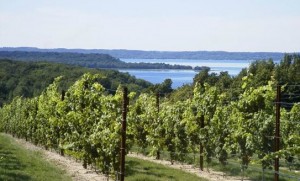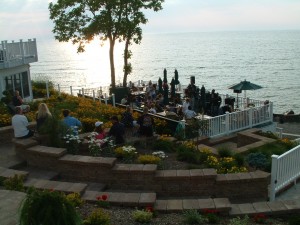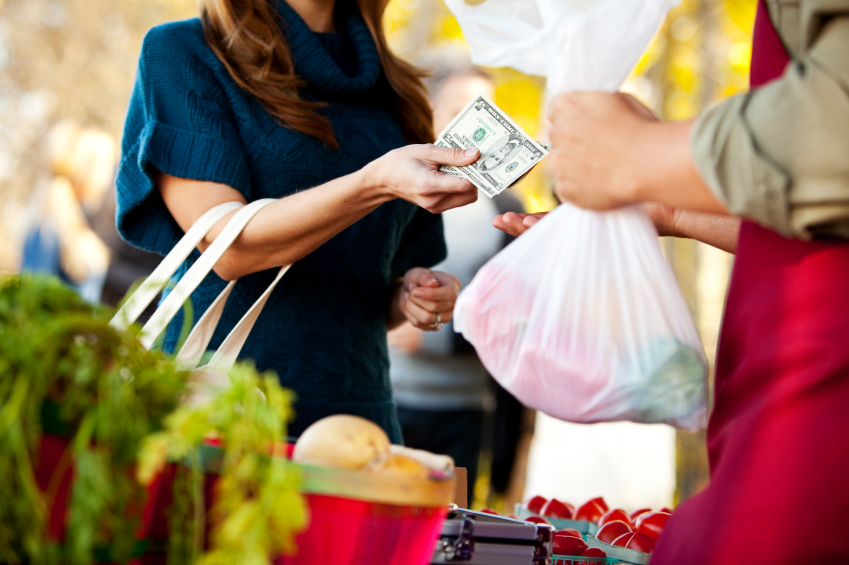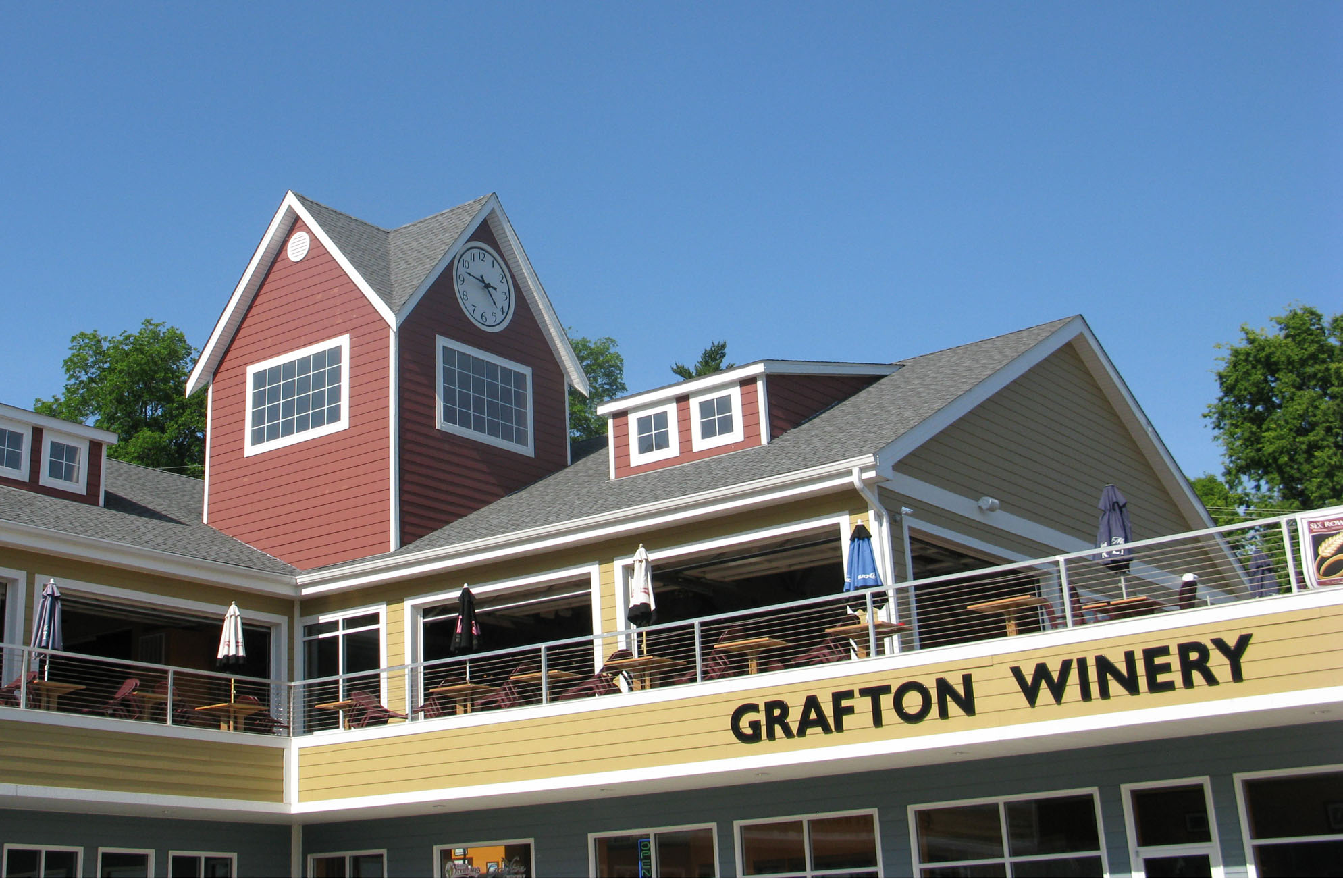Wineries and B&B’s – A Good Mix?
It’s hard to imagine a prettier setting for a winery than the Old Mission Peninsula in northern Michigan, with layers of gentle hills spilling into Grand Traverse Bay. Edward O’Keefe Sr. was the first to take advantage of the views when he opened Chateau Grand Traverse, the Traverse City area’s first commercial winery, in 1974. Today the winery produces 100,000 cases each year and manages 120 acres of estate vineyards, with another 60 acres under contract.
But his vision wasn’t complete, and in the mid-1990s he understood why: it wasn’t quite a ‘destination”–yet. Located eight miles from town, decades before wineries defined tourism on the peninsula, he needed to offer visitors an incentive to make the drive. The result in 1997 was Chateau Grand Traverse Inn, the winery’s elegant bed-and-breakfast.
‘It’s a stepping point for people coming to enjoy the wineries and countryside,” Eddie Jr., president of the company, says of the eight-room inn. ‘It’s by no means our core business.” The O’Keefes sweeten the deal for guests by providing a complementary bottle of wine every night, and most rooms are usually occupied. ‘I don’t think we would open an inn as an exclusive business on its own,” O’Keefe says, ‘but it’s a complement to the other things we do. It endears guests to our winery.”
O’Keefe estimates that today it would cost about $1.2 million to build the inn. ‘But we have a lot of business uses for it–it’s a B&B, an owner’s apartment, and there’s storage.” So, all things considered, would he build it today? ‘Yes,” he says, ‘we probably would.”
None of the winery owners interviewed see winery/B&Bs as a growing trend. Although their businesses have endured, they became
innkeepers by different routes.
‘We did it the opposite of everyone else,” says Andrea Bushweiler, innkeeper of the Lakehouse Inn & Winery in Geneva-on-the-Lake, Ohio. Bushweiler and her parents, Sam and Karen Fagnilli, bought their already-operating inn, with eight rooms and four cottages, in 2000. They had no intention of getting into the wine business.
For this family, the winery was an add-on. ‘We were looking for a reason to attract business in the off-season,” Bushweiler says. They noticed that every evening, people would gather on the inn’s deck with a glass of wine and watch the sunset over Lake Erie. ‘I said, hey, we should be producing wine for them to drink,” and the winery opened in 2002, making 4,000 gallons a year.
‘I think many people stay here because we have both [the inn and winery],” she says. The family was careful to house guests in separate buildings, giving B&B guests privacy from winery activity. Occupancy is close to 100 percent from May to October, with weekday business dropping off during winter. ‘Still,” she says, ‘even in winter we fill up on weekends.”
Bushweiler isn’t sure her family would build a new B&B today. ‘The combination works for us because the inn was already established when we bought it,” she says. ‘But today’s B&Bs are competing with hotels–you almost have to have private baths, a common room and space for breakfast. Now you have to weigh a lot of factors that might not have existed for B&Bs 20 years ago.”
Winemaking and innkeeping evolved differently for Sandy and Steve Palmer, owners of Madison Vineyards in North Madison, Indiana, which produces 6,000 gallons per year halfway between Cincinnati and Louisville. ‘We worked the vineyard and winery for 10 years before we opened the B&B,” Sandy explains. ‘We built much more house than we needed, intending to open the B&B eventually. We thought an inn would be a good complement to the winery.” Part of their reasoning was rising gasoline prices and a hunch that regional travel would increase.
Regional automotive leisure travel has been increasing over the past several years. According to the U.S. Travel Association, auto travel is was the primary means of transportation used by vacation travelers (76%) from August 2008 to July 2009. American Express reported that 33% of travelers would prefer to drive than fly in 2010, even if the travel time were longer.
The Palmers opened their four-room B&B, along with an additional, separate cottage, six years ago. Sandy says, ‘It turned out to be a great complement. There’s a romance to sleeping at a winery.” Business at the inn fluctuates with the season, June to October being the busiest time. ‘January is the only very slow month. Business picks up again for Valentine’s Day.”
Her advice to other winery owners contemplating innkeeping: ‘Be sure you can handle both well,” she says. ‘This week, some guests wanted a late breakfast. I couldn’t accommodate them because I had work to do at the winery.
‘Both businesses are confining,” she adds. ‘You can’t do spontaneous things–dinners with friends, family visits–and you need to be okay with that, or find help that will cover for you.”
[stextbox id=”custom” caption=”ROOM RATES”]Pricing structures were different at the three winery/B&Bs in this story. Rates are subject to change at any time:
- At Chateau Grand Traverse, the room rate ‘in season” (May-October) and on holidays is $175, with a 2-night minimum on weekends.
- Lakeside Inn prices each room differently, weekdays and weekends, with rates changing seasonally. Rates for the eight rooms and suites range from $89 to $239 weekdays and $229 to $269 weekends. The inn’s two cottages are priced from $109 to $189 per night, depending on the season.
- Madison Vineyards rooms are priced from $120 to $150 per night in all seasons, and the cottage is priced at $95 per night [/stextbox]






